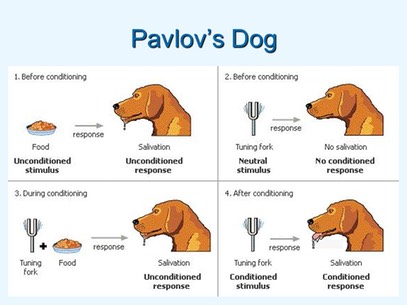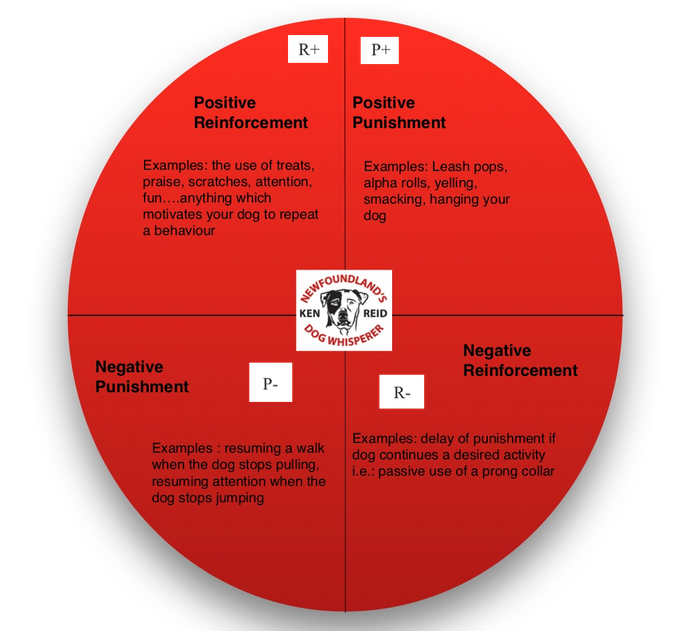
One of the most misunderstood tenants of basic psychology is the concept of PUNISHMENT. Nowhere is this more prevalent in than in the dog world. You ask most people to define punishment, they recite examples of smacking or yelling at the dog. They would be correct in their understanding. These examples are solid forms of positive punishment. However, what many do not realize is that punishment can take many forms, just because the term punishment has negative connotations does not mean it cannot be an effective and valid means of behaviour modification and just because you can use a particular form to change one behaviour, does not make it effective in changing another behaviour. The process of behaviour modification can be complex. Often times it is the more subtle nuances which mean the difference between truly effective behaviour modification and potentially creating more serious issues.
When delving into punishment to achieve behaviour modification, one would be remiss if they do not at least familiarize themselves with the work of Ivan Pavlov and B.F. Skinner. Pavlov is of course the father of classical conditioning, Skinner the father of operant conditioning.

Many people have heard of Ivan Pavlov or at least have a passing familiarity with some of his work. Pavlov was a well respected Russian psychologist. He was awarded the Nobel Prize for Physiology or Medicine in 1904. Some overlook that Pavlov kept a kennel full of animals at his lab and developed many of his theories studying those animals. Perhaps Pavlov’s most known work was with dogs. He studied dogs salivary response to being offered food. Pavlov realized that when a unconditioned stimulus ie food, was presented to a dog, it achieved an unconditioned/natural response ie, the dog drooled. He took this a step further and began pairing the food with a neutral stimulus ie a bell. Eventually the food was faded out, the bell remained and achieved a conditioned response ie, the dog still drooled. This became known as the Pavlovian Response.
The concept is very important in behaviour modification especially when it comes to dealing with behaviours such as aggression, resource guarding and fear. So pay attention, it will come up again.

B.F. Skinner was a well respected American psychologist and professor at Harvard University. His work studying behaviour was ground breaking. Skinner believed that environmental variables controlled behaviour. He acknowledged Pavolov’s work that respondent behaviours could be elicited by stimuli and could be modified through classical conditioning and expanded the view. Skinner also defined operant behaviours as behaviours that could be induced by a particular stimulus and strengthened through reinforcement. He developed his theory of operant conditioning through some very interesting studies on animals such as rats, and pigeons. Skinner acknowledged that using aversives can lead to the appearance of behaviour change but warned what was being witnessed could be avoidance and escape coping strategies as opposed to true behaviour modification.
When one studies behavior modification, the 4 quadrants quickly come up. 1. Positive Punishment 2. Negative Punishment 3. Positive Reinforcement 4. Negative Reinforcement.

It is important to understand that there is no sentimental value associated with any of these terms. Just because something is positive does not mean is it good, punishment does not necessarily equal bad. They are terms used to describe a response to a behavior. Positive means something is added, negative means something is taken away. Reinforcement is used to strengthen a response, punishment to decrease the likelihood of the behavior reoccuring. For more on this see “The Use of Classical and Operant Conditioning In Dog Training”.
Why is this important to understand when it comes to working with our dogs and why is it especially important when addressing issues like aggression or resource guarding?
To answer those questions you must first accept that your dog is behaving the way he is as an emotional response to being presented with stimuli. In the case of dog reactivity to other dogs, the dog reacts negatively because it does not like (for whatever reason) being approached by other dogs. In the case of resource guarding of food, the dog does not like being approached while eating. In both situations the dog has previously learned that negative things happen when presented with these situations. This is not a difficult concept to accept. As a child, we quickly learn if a wasp lands on you, it will bite, and that bite hurts. As a result, you see kids and adults alike running away from wasps, swatting at them and generally trying to keep them away. In the cases above, maybe the dog was attacked in the past by other dogs. In the case of food, the dog learned that when he is eating and others approach, the food will disappear.
Once you accept this, your plan to deal with the behaviour becomes much clearer. You will only get a true change in behavior if you change the dog’s emotional response to those stimuli. In other words in order to get a more positive reaction from your dog in these situations, you must encourage your dog to accept AND enjoy these situations.
This cannot be achieved through the use of any punishment, positive or negative. If you attempt to address the situation through the use of aversive strategies ie. yelling, hitting, or leash corrections, you may stop the dog from growling but the dog will still dislike being exposed to the stimulus and may therefore lash out without warning when pushed too far. If you attempt to deal with the behaviour by removing the stimulus ie removing the food from the dog when he growls, the dogs worst fears are being reinforced…when I am eating and somebody approaches, the food disappears.
Change can only occur effectively and without the potential pitfalls of using aversive practices through the use of positive reinforcement. Remember, the dog is growling because he is uncomfortable with the perceived outcomes. In order to encourage him to change his perception you have to work on him developing positive associations in these situations (engage in classical conditioning) AND reward him heavily for desired responses (engage in operant conditioning). If every time somebody approaches the dog while he is eating, the dog gets rewarded (the less reaction the higher the reward) the dog will begin to enjoy people approaching while he is eating. If everytime the dog is approached by another dog he gets rewarded (the more intense the interaction, the greater the reward), the dog is going to begin to appreciate other dogs approaching. It is a win win situation.
Classical and operant conditioning are the backbone of behavior modification. In order to engage in any effective techniques, these practices must form the basis of any work done. Often times, people gloss over the importance of conditioning passing it off as human psychology and not really applicable in dog training. This is a mistake. Classical and operant conditioning were originally principles developed from working with animals including dogs. Discounting these principles and engaging in behavior modification would be like playing guitar without knowing your scales. You may get there but there will be huge gaps in your knowledge which can come back and bite you in the long run.
